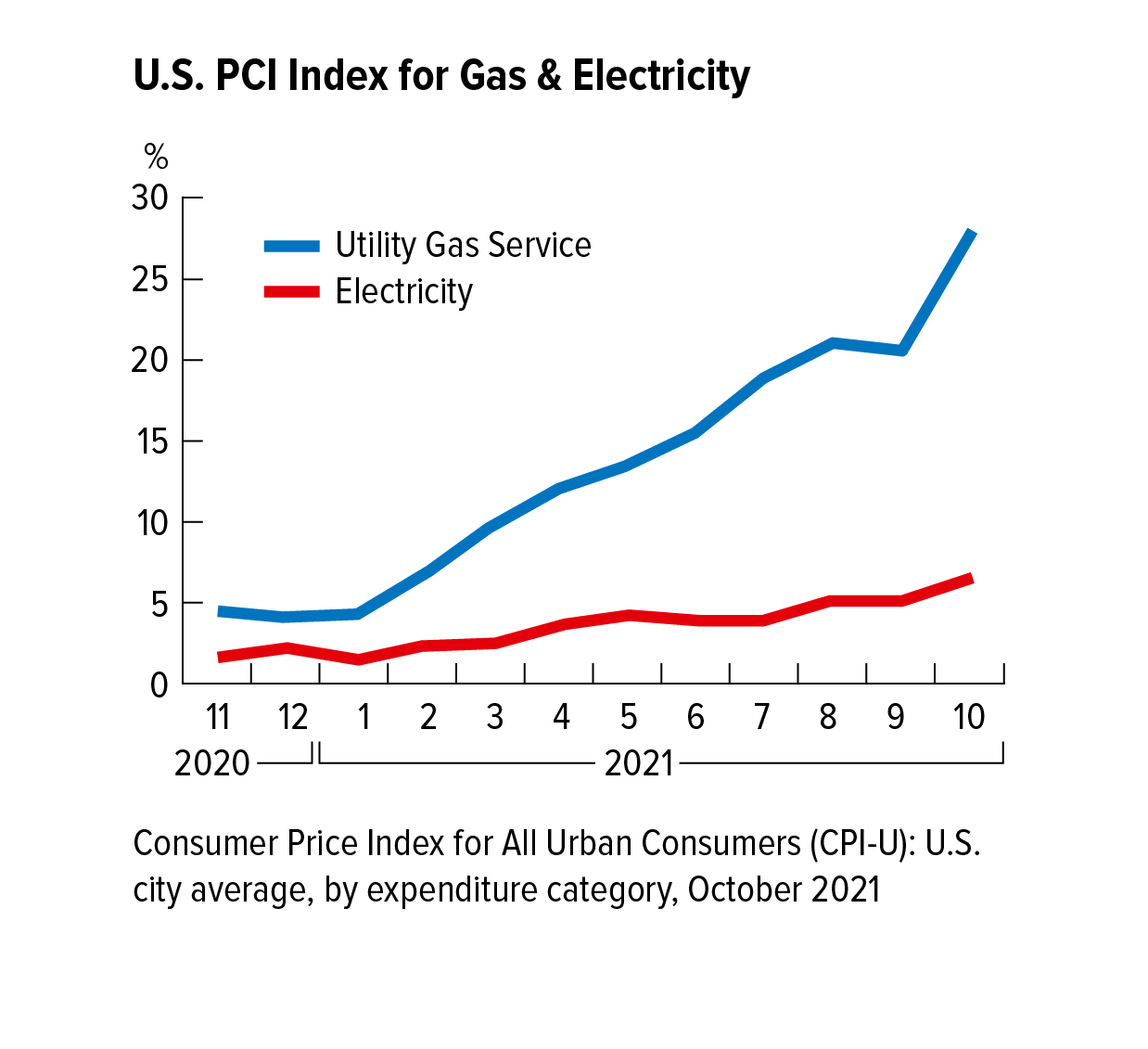REVOLUTION IN U.S. HEATING MARKET
The United States is one of the world’s largest heating markets. Currently, the U.S. heating market is benefitting from a tailwind for heat pumps, thanks to environmental policies implemented by the Biden administration, subsidies from state governments and electric power companies, and soaring gas prices. Across the globe, green recovery from the pandemic is becoming a trend toward carbon neutrality in 2050.
Just as the shift from gasoline-powered vehicles to electric vehicles (EVs) is progressing in the automotive industry, it is hoped that a shift from fossil fuel heating to heat pump heating will make gradual but sure progress in the United States as well. 
Air-source heat pumps (ASHPs), one type of heat pumps, have excellent energy efficiency because they use the heat of air, which is a renewable energy, to generate thermal energy that is three times greater than the input energy. In addition, they are also attractive with easier installation and lower initial costs than the ground-source type. In recent years, the application range of ASHPs has been expanded to extremely cold regions by developing technology that can demonstrate high heating performance even under low outdoor air temperatures.
Compared with markets such as Japan, China, and Europe, the U.S. heat pump market is still in a developmental stage. In the United States, ducted air conditioning that air conditions a whole building has historically been the mainstream technology, and consolidated units such as window units, through-the-wall units, and packaged terminal air conditioners (PTAC) that are easy to install are also very popular. Most of these products are cooling-only type, and electric heaters and gas furnaces are often used for heating in winter.
In recent years, with the advance of Japanese and other Asian manufacturers, heat pump air conditioners have gradually become recognized in the United States, but they still occupy only part of the market. However, due to factors such as the environmental policies and the increase in gas prices, the market for heat pumps that realize energy-saving heating using renewable energy has begun to benefit from a tailwind. In the United States, the Biden administration, which was inaugurated at the beginning of this year, emphasizes environmental policy and aims to reduce CO2 emissions by 50 to 52% from 2005 levels by 2030, and to virtually zero by 2050. The Biden Plan also states that the government will make dramatic investments in energy efficiency in buildings, including completing 4 million retrofits and building 1.5 million new affordable homes.
Against this backdrop, there are some subsidy programs for replacements of combustion boilers that have high CO2 emissions with high-efficiency heat pump systems by the governments and electric power companies in the states such as Connecticut, Maine, Massachusetts, New York, and Vermont. These subsidy programs are also expected to greatly boost demand for heat pumps in the United States.
In addition to these policies, the recent rise in gas prices may be one of the factors driving demand for electric heat pumps. According to the consumer price index (CPI) for October 2021 released by the U.S.
Bureau of Labor Statistics (BLS) on November 10, all the major energy component indexes increased sharply over the last 12 months. The index for natural gas rose by 28.1% year on year and the electricity index rose by 6.5% year on year.
Japanese manufacturers with strength in ASHPs have been promoting them in the U.S. market, centering on ductless air conditioners. The companies have been expanding heat pump product lineups such as ductless split-type air conditioners, ducted unitary systems, and variable refrigerant flow (VRF) systems, which incorporate strong heating performance under low outdoor temperatures, high energy efficiency with inverter technology, and environmental friendliness using low global warming potential (GWP) refrigerants, etc. In addition, the use of heat pumps is likely to expand from space heating to water heating. Then, new products developed in anticipation of such demand are appearing. As an example, Mitsubishi Electric Trane HVAC US (METUS) recently released HEAT2O all-electric commercial heat pump with CO2 refrigerant that produces a large amount of hot water in select markets.
In countries and regions such as Japan, China, and Europe, heat pump heating contributes to a reduction in CO2 emissions. It is hoped that the large U.S. heating market, which has relied on fossil fuels until now, will also steer toward heat pump heating under the environmental policies implemented by the Biden administration introduced earlier.